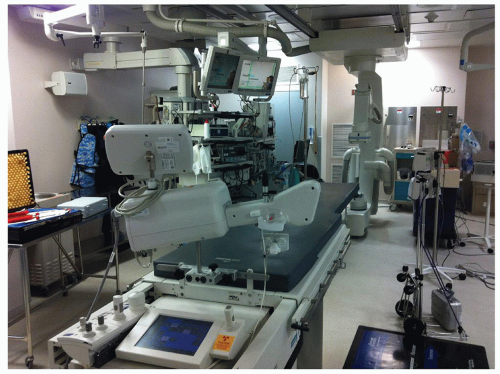INTRODUCTION
Coronary artery bypass grafting (CABG) surgery and percutaneous coronary intervention (PCI) are established treatment for coronary artery disease (CAD). Both have been shown to be effective in both alleviating symptoms and increasing long-term survival.
CABG surgery has been shown to have superior outcomes in the high-risk patient cohorts (diabetics, left main disease, three vessel disease, high SYNTAX scores, and patients with reduced cardiac function). The extent of benefit in low and intermediate risk patients is not as well defined. The main advantage of CABG arises from the use of the left internal mammary artery (LIMA) to left anterior descending (LAD) artery graft, which has an unparalleled long-term patency. Saphenous vein graft (SVG) failure remains one of the weaknesses of CABG with early failure rates, ranging from 6.2% to 30%.
Conversely, multivessel PCI with drug-eluting stents (DES) has the distinct advantage of being a less invasive form of therapy, with faster recovery and lower stroke rates, compared with CABG. DES have lower failure rates at 12 to 18 months compared with SVG (defined as stent restenosis and thrombosis compared with SVG occlusion). One of the main disadvantages of PCI is the higher rates of target vessel reintervention when compared with CABG, especially with respect to PCI in the LAD territory.
The potential of hybrid coronary revascularization (HCR) strategy is the ability to offer patients a tailored approach to the treatment of CAD, while minimizing the risks of the operation. The LIMA to LAD graft is performed in tandem with PCI to non-LAD vessels, combining the superior patency of the LIMA to LAD graft with that of DES to non-LAD vessels. As less surgical grafts will be required with HCR, this provides the additional advantage of enabling the LIMA to LAD graft to be performed through a nonsternotomy approach. Several observational studies have shown that HCR is a feasible and safe technique with short-term outcomes that are noninferior to standard CABG.
TIMING
Hybrid revascularization can be performed as either a “one-” or “two-staged” procedure. HCR performed in a single setting requires a specially designed hybrid operating room combining the facilities of the cardiovascular surgery operating room with that of a catheterization laboratory (
Fig. 53.1).
The “one-stage” approach has the distinct advantages of allowing for completion angiography to assess graft patency, allows for more aggressive multivessel PCI, and facilitates completion of the procedure during a single operation while entailing a single technical fee (
Table 53.1). The main disadvantage is the increased risk of bleeding given that the surgery must be performed under the influence of the potent antiplatelet agents used for PCI (
Table 53.1).
On the other hand, for the “two-staged” approach, PCI and CABG are performed in their respective procedural environments separated by hours or days, although they are routinely performed during the same admission. When PCI is performed prior to CABG, lesions that cannot be successfully addressed by PCI can later be grafted at the time of CABG (
Table 53.2).
The disadvantage to this strategy is that CABG will have to be performed under the effect of dual anti-platelet therapy such as aspirin and Clopidogrel
®, thereby increasing the rate of major bleeding and bleedingrelated complications. Also, especially when minimally invasive approaches are utilized, completion angiogram to ensure LIMA to LAD integrity requires the performance of an additional procedure. Performing the LIMA to LAD graft prior to PCI allows for more aggressive interventions to be performed with the LAD territory revascularized (
Table 53.3). The integrity of the LIMA to LAD can be assessed at the time of PCI in this approach.
Performance of CABG prior to PCI provides the benefits of a LIMA to LAD graft prior to intervention on the subsequent vessels, which avoid the risks associated with anti-platelet agents. This approach also allows for evaluation of the LIMA to LAD patency during PCI via angiography. The disadvantage of this approach is that CABG will be performed with incomplete revascularization due to residual coronary artery stenosis that could, potentially, increase perioperative morbidity. Additionally, in the event of unsuccessful PCI or procedure-related coronary complications, a repeat and higher risk CABG procedure may be required.

SURGICAL TECHNIQUES
Revascularization of non-LAD vessels is performed during the PCI portion of the HCR procedure. The femoral or radial approaches are utilized and the procedure is performed as per the standard routine protocols for stent implantation.
The CABG component of HCR constitutes the surgical revascularization of the LAD utilizing the LIMA to LAD graft. Multiple techniques exist to perform this surgical portion of the procedure and are discussed below.
Minimally Invasive Direct Coronary Artery Bypass (MIDCAB) or Minimally Invasive Cardiac Surgery (MICS) refers to the technique in which the LIMA mobilization is performed through a limited anterior or left thoracotomy through the fourth or fifth intercostal space utilizing a special retractor. A hand-sewn LIMA to LAD anastomosis is then performed on the beating heart using specialized stabilizers, retractors, and a coronary shunt. Single-lung ventilation with a double-lumen
endotracheal tube is preferred to facilitate optimal anatomical exposure.
 SURGICAL TECHNIQUES
SURGICAL TECHNIQUES



